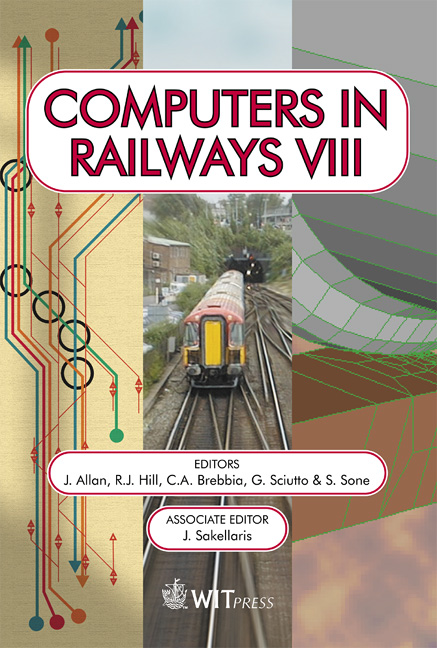Sequential Linear Power Flow Solution For AC Electric Railway Power Supply Systems
Price
Free (open access)
Transaction
Volume
61
Pages
10
Published
2002
Size
423 kb
Paper DOI
10.2495/CR020521
Copyright
WIT Press
Author(s)
C J Goodman & T Kulworawanichpong
Abstract
Characterisation of AC electric railway power supply systems requires a power flow algorithm as a basic tool to determine bus voltages, line currents or power flows through feeder lines. The execution of the algorithm needs efficient search methods. Among these, the Gauss-Seidel and the Newton-Raphson methods have been successfully developed to obtain network solutions over several decades. Over the previous decade, some emerging power-electronic compensation technologies have affected practical power system behaviours, including AC railways. This advancement in technology has introduced new complications to the existing AC railway power systems. Thus, the optimisation techniques need refinement and more efficient algorithms need to be developed. This should enable more accurate optimum solution and require considerably less calculation time. This paper describes a novel AC railway power flow method, which uses a current load model instead of a classical power load model. Therefore, nodal analysis together with a simple search algorithm is sufficient to solve such a problem. Also, this simplified algorithm considerably reduces the overall calculation time. This new method is named Sequential Linear Power Flow and is explained in depth in this paper. For benchmarking, the well-known Newton- Raphson power flow algorithm has been used to perform identical calculations. The test systems were the modified standard IEEE 24-bus, 57-bus and a ten-train AC railway system, respectively. The computing results indicate that the proposed method requires significantly less execution time than that required by the Newton-Raphson method while the same accuracy is attained.
Keywords





